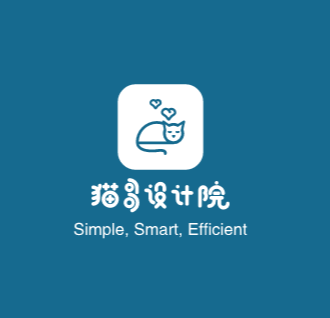thinkphp6 控制器的执行
说明
接上一篇继续分析。控制器操作的代码实际上都包含在$this->dispatchToRoute($request)中,展开来看:
protected function dispatchToRoute($request)
{
$withRoute = $this->app->config->get('app.with_route', true) ? function () {
$this->loadRoutes();
} : null;
return $this->app->route->dispatch($request, $withRoute);
}
上一节我们跳过路由,分析了URL解析,下面接着分析控制器和操作的解析。 dispatch方法:
public function dispatch(Request $request, $withRoute = null)
{
$this->request = $request;
$this->host = $this->request->host(true);
$this->init();
if ($withRoute) {
//加载路由
$withRoute();
$dispatch = $this->check();
} else {
$dispatch = $this->url($this->path());
}
$dispatch->init($this->app);
return $this->app->middleware->pipeline('route')
->send($request)
->then(function () use ($dispatch) {
return $dispatch->run();
});
}
重点关注后面的return语句,这里又给控制器操作的代码包裹上了中间件闭包,其原理也跟前面分析的全局中间件原理一样,不再赘述。重点的重点关注run方法。
控制器类的 run 方法分析
run方法代码如下:
public function run(): Response
{
// HTTP的OPTIONS方法用于获取目的资源所支持的通信选项。
if ($this->rule instanceof RuleItem && $this->request->method() == 'OPTIONS' && $this->rule->isAutoOptions()) {
$rules = $this->rule->getRouter()->getRule($this->rule->getRule());
$allow = [];
foreach ($rules as $item) {
$allow[] = strtoupper($item->getMethod());
}
return Response::create('', '', 204)->header(['Allow' => implode(', ', $allow)]);
}
//这里的exec方法位于Controller类
$data = $this->exec();
// 控制器操作返回的数据,进一步加工,设置Http报头、状态码等,返回一个Response对象
return $this->autoResponse($data);
}
分析详见注释。主要的逻辑在$data = $this->exec(),其中,注意exec方法位于think\route\dispatch\Controller类,其代码如下:
public function exec()
{
try {
// 实例化控制器
$instance = $this->controller($this->controller);
} catch (ClassNotFoundException $e) {
throw new HttpException(404, 'controller not exists:' . $e->getClass());
}
//A 注册控制器中间件
$this->registerControllerMiddleware($instance);
// 这里跟前面全局中间件原理一样,不再分析
return $this->app->middleware->pipeline('controller')
->send($this->request)
->then(function () use ($instance) {
// 获取当前操作名
$action = $this->actionName . $this->rule->config('action_suffix');
if (is_callable([$instance, $action])) {
$vars = $this->request->param();
try {
$reflect = new ReflectionMethod($instance, $action);
// 严格获取当前操作方法名
$actionName = $reflect->getName();
$this->request->setAction($actionName);
} catch (ReflectionException $e) {
$reflect = new ReflectionMethod($instance, '__call');
$vars = [$action, $vars];
$this->request->setAction($action);
}
} else {
// 操作不存在
throw new HttpException(404, 'method not exists:' . get_class($instance) . '->' . $action . '()');
}
// 控制器操作的执行在这里
$data = $this->app->invokeReflectMethod($instance, $reflect, $vars);
return $this->autoResponse($data);
});
}
详细分析见代码注释,以下再展开分析控制器的实例化和控制器中间件的注册。
A 控制器的实例化
执行实例化的think\route\dispatch\Controller类的controller方法代码如下:
public function controller(string $name)
{
// 是否使用控制器后缀
$suffix = $this->rule->config('controller_suffix') ? 'Controller' : '';
// 访问控制器层名称
$controllerLayer = $this->rule->config('controller_layer') ?: 'controller';
// 空控制器名称
$emptyController = $this->rule->config('empty_controller') ?: 'Error';
//获取控制器完整的类名
$class = $this->app->parseClass($controllerLayer, $name . $suffix);
// 如果这个类存在
if (class_exists($class)) {
//通过容器获取实例(非单例模式)
return $this->app->make($class, [], true);
//不存在时,如果有空控制器的类存在
} elseif ($emptyController && class_exists($emptyClass = $this->app->parseClass($controllerLayer, $emptyController . $suffix))) {
//同理,实例化空控制器
return $this->app->make($emptyClass, [], true);
}
// 如果找不到控制器的类,且连控控制器也没有,抛出错误
throw new ClassNotFoundException('class not exists:' . $class, $class);
}
具体分析见注释。
B 控制器中间件注册
执行注册的registerControllerMiddleware方法代码如下:
protected function registerControllerMiddleware($controller): void
{
// 获取反射类对象
$class = new ReflectionClass($controller);
// 检查控制器类是否有middleware属性
if ($class->hasProperty('middleware')) {
//提取middleware变量
$reflectionProperty = $class->getProperty('middleware');
//设置可见性为公有
$reflectionProperty->setAccessible(true);
//获取middleware属性的值
$middlewares = $reflectionProperty->getValue($controller);
//解析控制器中间件配置
foreach ($middlewares as $key => $val) {
if (!is_int($key)) {
//如果有设置only属性
//$this->request->action(true)获取当前操作名并转为小写
//$val['only']各元素也转为小写,然后判断当前操作是否在$val['only']里面
//不在则跳过(说明该操作不需要执行该中间件)
if (isset($val['only']) && !in_array($this->request->action(true), array_map(function ($item) {
return strtolower($item);
}, is_string($val['only']) ? explode(",", $val['only']) : $val['only']))) {
continue;
//如果有设置except属性,且当前操作在$val['except']里面,说明当前操作不需要该中间件,跳过
} elseif (isset($val['except']) && in_array($this->request->action(true), array_map(function ($item) {
return strtolower($item);
}, is_string($val['except']) ? explode(',', $val['except']) : $val['except']))) {
continue;
} else {
//保存中间件名称或者类
$val = $key;
}
}
if (is_string($val) && strpos($val, ':')) {\
$val = explode(':', $val, 2);\
}
//注册控制器中间件,跟前面注册路由中间件一样原理,只是,中间件的type为controller
$this->app->middleware->controller($val);
}
}
}
分析详见注释。
总结
长路漫漫,到这里,终于分析完了runWithRequest方法,前面的分析,基本是围绕着runWithRequest方法展开。现在,让我们将目光转回Http类的run方法:
public function run(Request $request = null): Response
{
.
.
.
try {
$response = $this->runWithRequest($request);
} catch (Throwable $e) {
$this->reportException($e);
$response = $this->renderException($request, $e);
}
// 设置cookie并返回响应对象
return $response;
}
runWithRequest方法跑完,run方法也差不多结束了,最终它返回一个Response对象。
Bug天天改,头发日日疏,码字不易,如果有帮助到你,就点击"下方感谢"支持一下把.



